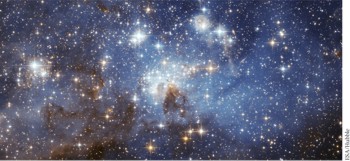Tri-Valley Stargazers Focuses on the Big Picture
Tri-Valley Stargazers Focuses on the Big Picture
As a club, Tri-Valley Stargazers is reaching new heights, both literally and figuratively. The interest in astronomy in the Bay Area is explosive, reports Todd Billeci, Stargazers vice president. This is in stark contrast to other parts of the country, where many hobbyist clubs are dwindling in size as their membership "grays."
Billeci points out that the first generation of amateur astronomers got hooked during the Apollo missions, their imaginations fired by the moon landings. As the same cohort becomes senior citizens, however, their clubs tend to become less active.
That is hardly the case here. Stargazers is making its mark by "putting together the most exciting programs we can possibly dream up," Billeci says. The club is fortunate to have a deep pool of resources from which to draw. "We are located in an area rich with professional astronomers at U.C. Berkeley, Lawrence Livermore National Lab, Stanford, and Lick Observatory. U.C. Santa Cruz has an outstanding astronomy department, and, of course, there is NASA Ames."
Also on that list is the SETI Institute, which leads the search for extraterrestrial intelligence. The peninsula-based organization was founded by Frank Drake, the astrophysicist who proposed an equation that, given the colossal number of stars and galaxies, concluded that there must be life on some of them.
The availability of top-notch speakers boosts the popularity of Stargazers' meetings. Recent guests include Geoff Marcy, the U.C. Berkeley astronomer and recipient of the Carl Sagan prize. September's speaker was Dr. Sebastiano Cantelupo, the U.C. Santa Cruz researcher pioneering the observation of "dark" galaxies.
Another meeting attraction is the "show-and-tell" session which precedes the speaker, a time when members can share their "exciting adventures in amateur astronomy" over the past month. "It provides a forum for us to be very interactive, one aspect that keeps people glued to our organization," Billeci remarks.
With its excellent viewing horizon, the club's remote "dark" site, H2O, Hidden Hill Observatory, is a major appeal. An open house during August's Perseid meteor shower drew a dozen cars full of people who packed the observatory or relaxed on lawn chairs to watch the event with the naked eye.
Next up is the spectacular drama of the winter sky, highlighted by the Orion nebula, the stellar nursery. "This is visible in a telescope as a magnificent cloud of dust and gas with a glowing core of hot young stars," Billeci comments.
Other special opportunities come up during the club's docent weekend at Yosemite in the summer and observation opportunities at Barcroft, a research station at 14,000 feet in California's White Mountains.
The club has a Facebook page, Yahoo and meet-up groups, and a camaraderie-building newsletter published by a Lawrence Livermore Lab scientist who summarizes the latest journal articles in layman's terms.
The very nature of stargazing as a peaceful, meditative activity is another part of its surging popularity. "Staying up all night with people sharing observation challenges builds special bonds," Billeci says. "Several people in this club have made friendships for life. There is no hurrying up when it comes to pointing your telescope in the sky."
For meeting dates and locations and other activities, visit these websites: www.trivalleystargazers.org, tech.groups.yahoo.com/group/trivalleystargazers, www.meetup.com/A-A-N-C, and www.facebook.com/trivalleystargazers.
Also in this issue...
- Surging ServiceMax Doubles Space in Hacienda West
- NetCertExpert Delivers IT Training, Consulting Services
- Business Bits
- Executive Profile: Moina Shaiq, Anarkalee Restaurant
- Rising Sales, New 3D Software Propel JAKROO Upward
- Construction on Track, Reservations Break Record for Stoneridge Creek Pleasanton
- Local and Regional Business Organizations Support Member Success Through Programs, Activities
- PtownLife.Org Is Digital Town Square for City Youth and Families
- Make a Difference for Pleasanton Festival 2012: A Catalyst for Change
- Tri-Valley Stargazers Focuses on the Big Picture
- 2012 Hacienda Holiday Food & Fund Drive
- Hacienda Index
- Calendar





